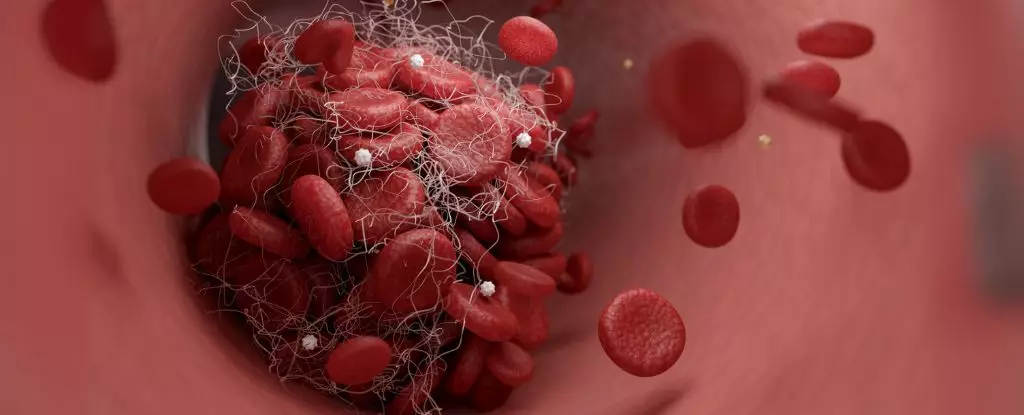In today’s world, few health issues are as insidious as strokes. Often perceived merely as a concern for the elderly, strokes are a burgeoning epidemic that transcends age, afflicting more and more young adults. As a former nurse in neurocritical care, I bore witness to the brutal aftermath of strokes, not just in the individual but within families hastily thrust into chaos and despair. This is not a distant worry; it is a reality that confronts many younger individuals as they unknowingly flirt with lifestyle choices that heighten their risk. With stroke being a leading cause of long-term disability and death, understanding its risk factors becomes not just a personal benefit but a societal imperative.
Demographics Under Duress
Traditionally, the demographic perceived to be most vulnerable to strokes consisted mainly of older adults. However, recent studies indicate a startling rise in stroke occurrences among individuals under 55, signaling troubling trends that transcend basic health education. Elevated risks related to lifestyle—like high blood pressure due to stress, poor diet, and lack of exercise—frequently plague younger populations. The health discourse often skews towards the elderly, overshadowing the urgent need for preventive measures amongst younger adults. What does this say about our societal priorities? Failing to address this growing demographic effectively translates to a systemic neglect of health education, resulting in devastating consequences that could otherwise be mitigated.
Understanding the Risk Factors
Delving into the complex tapestry of stroke risk factors reveals a mix of both modifiable and non-modifiable elements. Some, such as age, gender, and genetic predispositions, remain immutable. Women, especially, face unique vulnerabilities due to pregnancy and hormonal influences, which further complicate the landscape. However, the onus is on us to combat modifiable risks. High cholesterol levels, obesity, and lifestyle choices like smoking or excessive alcohol consumption present significant dangers. Socioeconomic status further complicates risk, with studies demonstrating that lower income often correlates with higher stroke incidence due to limited access to healthcare and education. It begs the question: How do we break this cycle?
Taking Charge: Eight Effective Changes
In light of the multifaceted nature of stroke risks, the power to effect change rests in informed lifestyle decisions. Here are eight compelling strategies that can significantly curb the risk of stroke, potentially lowering it by up to 70%.
1. Quit Smoking: Smoking elevates stroke risk over twofold by damaging blood vessels and making blood clots more likely. The act of quitting not only improves circulatory health but empowers personal agency against addiction.
2. Monitor Blood Pressure: Regular checks can catch developing hypertension early. Making simple dietary adjustments can be a game changer—reducing salt intake and adopting a rich array of nutrients can stabilize blood pressure levels.
3. Cholesterol Awareness: The data is alarming: individuals grappling with both high cholesterol and high blood pressure see a stroke risk soar—over three times higher, to be precise. Sustaining a healthy weight and exercising can reverse such risks.
4. Blood Sugar Management: High blood sugar not only wreaks havoc on glucose levels but can corrode blood vessels over time. Regular exercise and a fiber-rich diet are practical routes to mitigating this risk.
5. Maintain a Healthy Weight: Given that obesity aligns with a staggering 22% increased stroke risk, weight management is imperative. Small, consistent lifestyle adjustments can yield substantial results.
6. Adopt a Mediterranean Diet: Studies reveal the Mediterranean diet’s efficacy in reducing stroke risks. The inclusion of diverse fruits, vegetables, and healthy fats should be embraced not just as dietary choices but as a lifestyle.
7. Prioritize Sleep: Balancing sleep—neither too much nor too little—is essential. Striving for 7-9 hours of quality sleep daily is crucial for optimal cardiovascular function and offers a potent buffer against stroke.
8. Commit to Regular Exercise: Physical activity need not be daunting; even moderate weekly exercise can significantly bolster heart health. Integrating regular walks into daily routines can make a considerable difference.
Redefining Stroke Prevention in Society
The narrative surrounding strokes and risk factors reveals an urgent need for enhanced public health education, tailored specifically towards younger demographics. Society must dismantle the stigma surrounding age and health disparities. Those in positions of influence—from policymakers to educators—must prioritize proactive health initiatives, advocating for lifestyle changes that resonate with the realities of current populations. Encouraging informed health choices can serve as a powerful countermeasure against the silent threat of strokes, fostering a culture of health and resilience among future generations. It is not merely about survival; it is about thriving in the face of a burgeoning crisis.



Leave a Reply